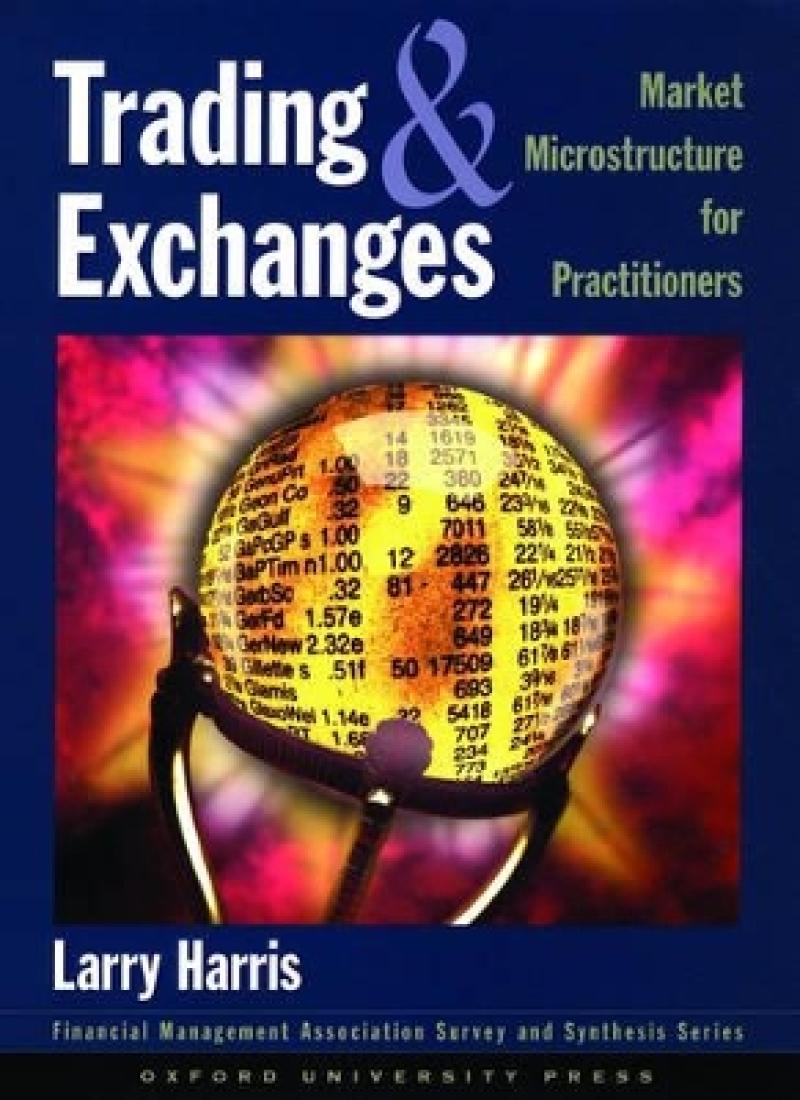This book is about trading, the people who trade securities and contracts, the marketplaces where they trade, and the rules that govern it. Readers will learn about investors, brokers, dealers, arbitrageurs, retail traders, day traders, rogue traders, and gamblers; exchanges, boards of trade, dealer networks, ECNs (electronic communications networks), crossing markets, and pink sheets. Also covered in this text are single price auctions, open outcry auctions, and brokered markets limit orders, market orders, and stop orders. Finally, the author covers the areas of program trades, block trades, and short trades, price priority, time precedence, public order precedence, and display precedence, insider trading, scalping, and bluffing, and investing, speculating, and gambling.
Les mer
Talks about trading, the people who trade securities and contracts, the marketplaces where they trade, and the rules that govern it. This book enables readers to learn about investors, brokers, dealers, arbitrageurs, retail traders, rogue traders, and gamblers; exchanges, boards of trade, dealer networks, ECNs, crossing markets, and pink sheets.
Les mer
PART I: THE STRUCTURE OF TRADING; PART II: THE BENEFITS OF TRADE; PART III: SPECULATORS; PART IV: LIQUIDITY SUPPLIERS; PART V: ORIGINS OF LIQUIDITY AND VOLATILITY; PART VI: EVALUATION AND PREDICTION; PART VII: MARKET STRUCTURES
Les mer
[It] is the most comprehensive treatment of market microstructure that I have seen...he does not compromise on breadth or depth...indispensable for anyone who cares about trading
". . .Trading and Exchanges is about as comprehensive a book about the markets and trading as you are going to find. . .[T]his book is . . .organized so that you can flip to any topic and be certain of in depth coverage and accessible explanations supported by graphs and tables. Harris touches on just about every aspect of market economics, structure and regulation, from the players. . .to the game. This book is an objective, and more important, practical survey of an area of financial economics that has become increasingly, and needlessly, complex. . . Harris keeps us on the straight and narrow. We are unable to drift into that disingenuous and murky world of trading advice based on personal success, or failure in the markets. . .Whether you are a novice or veteran investor, trader, dealer or broker, Trading and Exchanges cracks the code on practically every facet of market microstructures. It is a trading bible."--TurtleTrader.com
"Larry Harris is arguably the foremost expert on market microstructure. ... With his illustrious background you might suspect he knows of what he speaks. After you read this book, you will be convinced of it. Trading and Exchanges is the most comprehensive treatment of market microstructure I have seen. ... Harris offers something for everyone with an interest in trading. ... [He] presents his subject matter, which could be so daunting to many of us, in a surprisingly accessible and entertaining style. Despite this engaging style, he does not compromise on breadth or depth. ... Trading and Exchanges is indispensable for anyone who cares about trading. What's more, it is entertaining."--Journal of Investment Management
Les mer
Selling point: The only comprehensive volume designed to show how markets work
Selling point: Reveals why some traders profit while others fail
Selling point: Covers single price auctions, open outcry auctions, and brokered markets limit orders, market orders, and stop orders
Les mer
The only comprehensive volume designed to show how markets work. Explains why some traders profit while others fall short of success.
Produktdetaljer
ISBN
9780195144703
Publisert
2002
Utgiver
Vendor
Oxford University Press
Vekt
1307 gr
Høyde
261 mm
Bredde
186 mm
Dybde
35 mm
Aldersnivå
P, 06
Språk
Product language
Engelsk
Format
Product format
Innbundet
Antall sider
656
Forfatter
